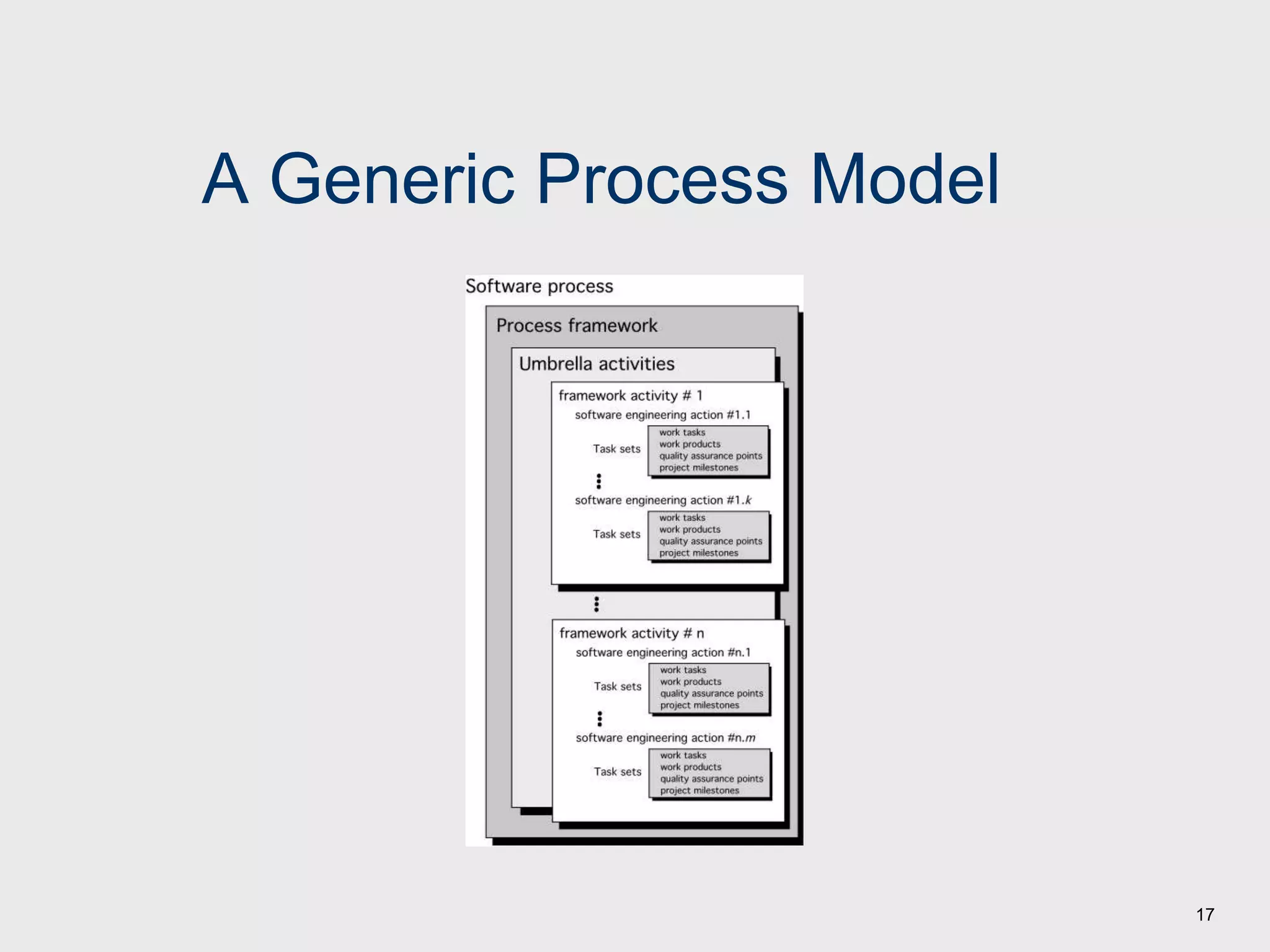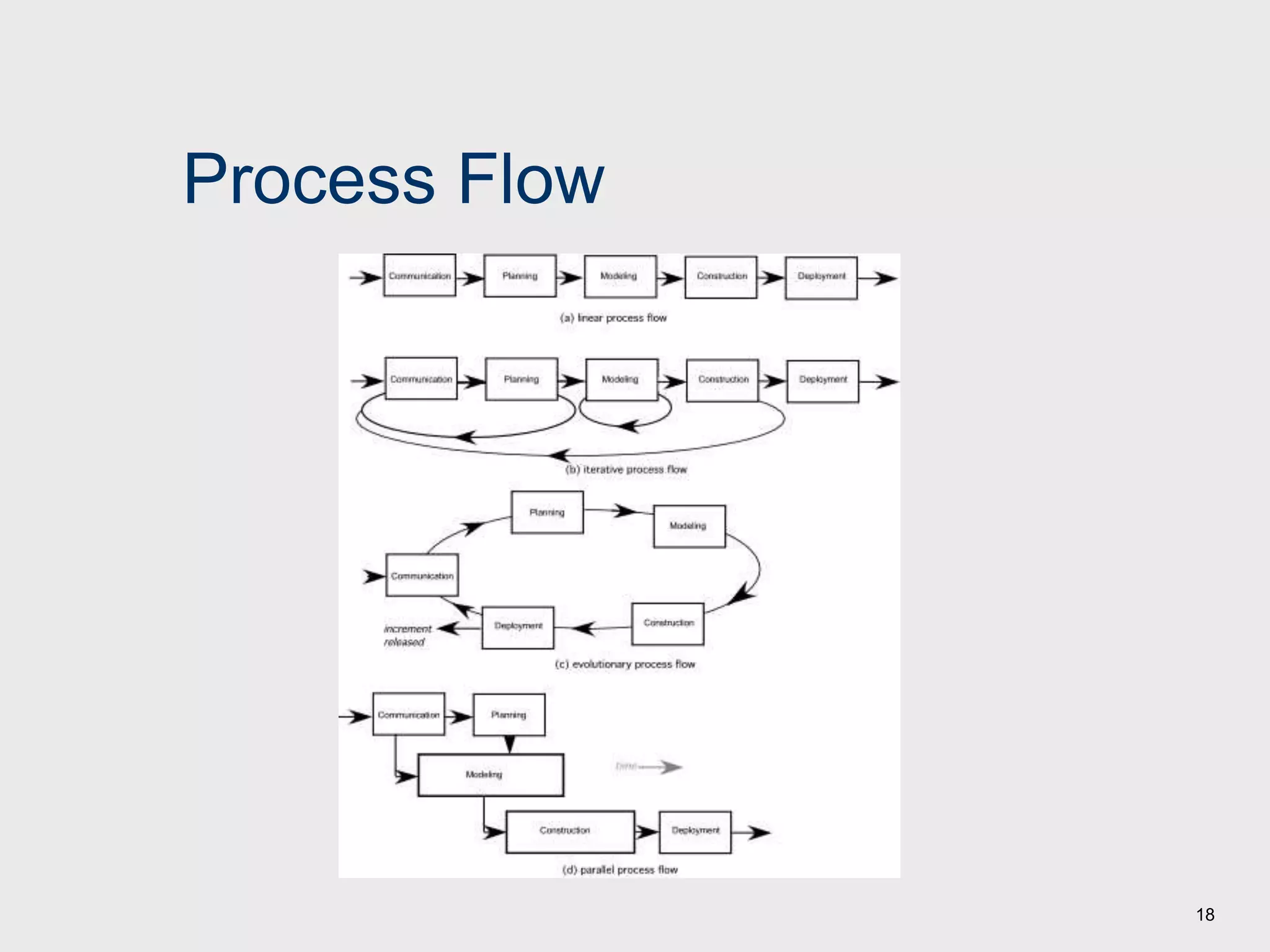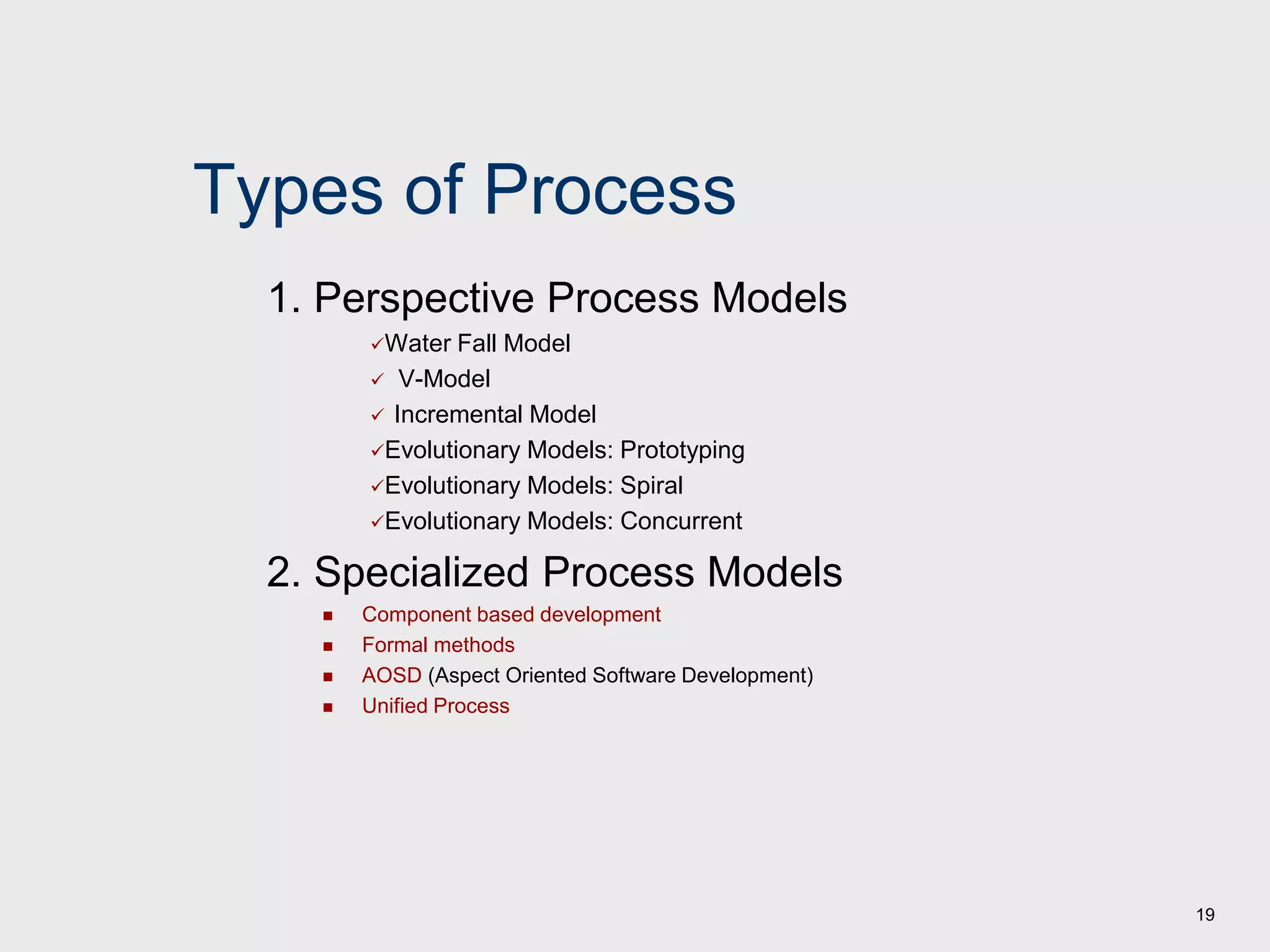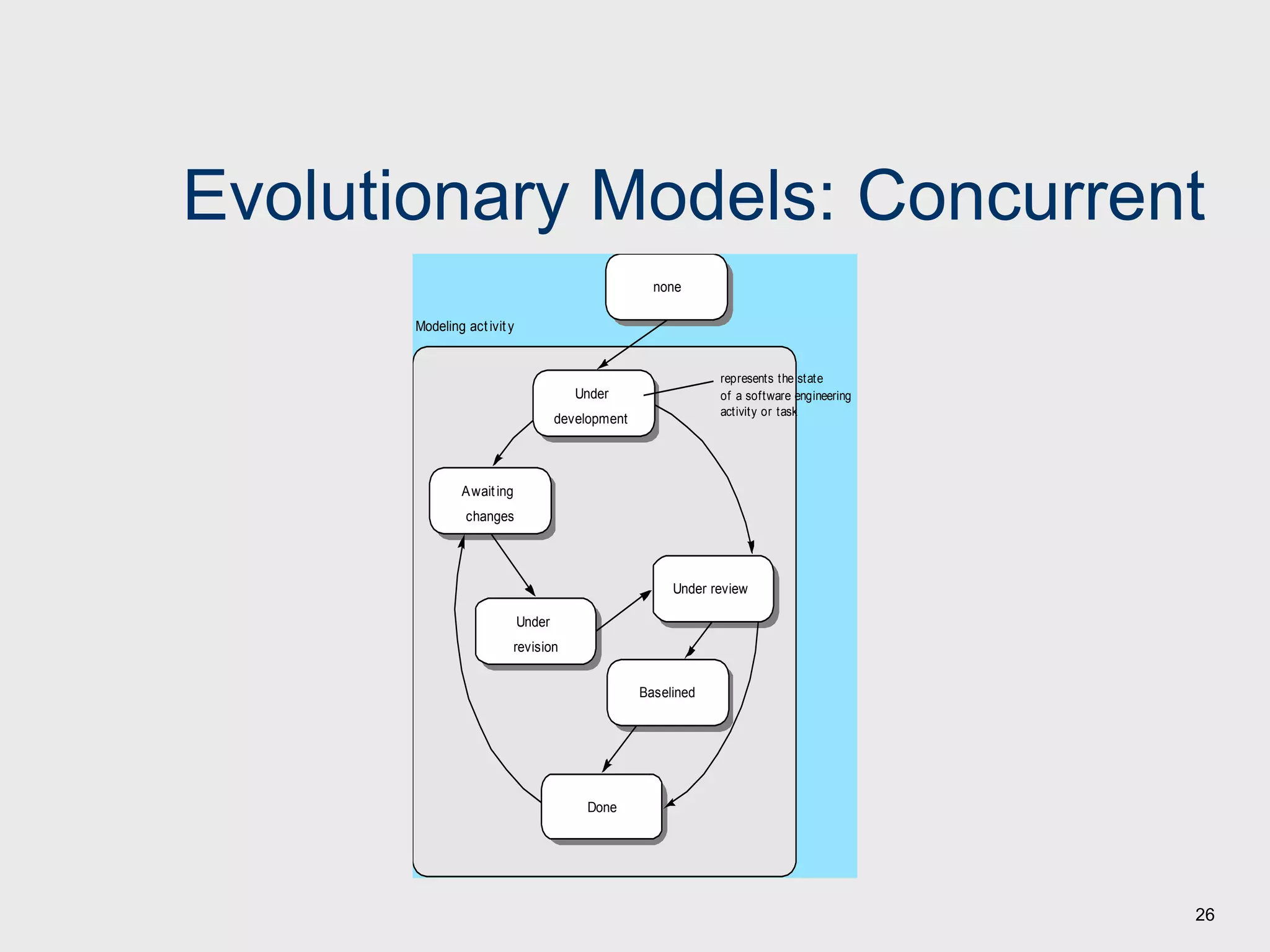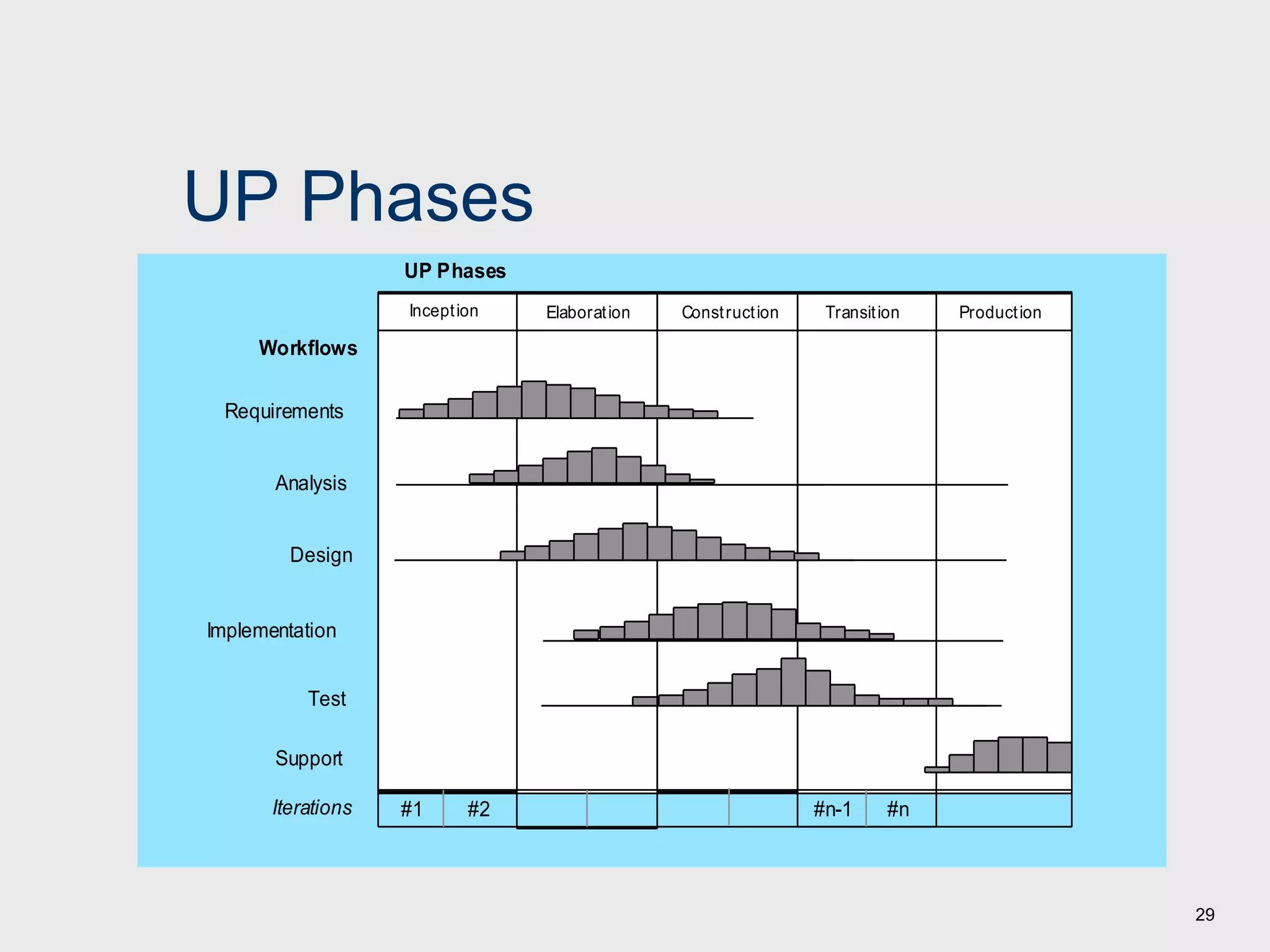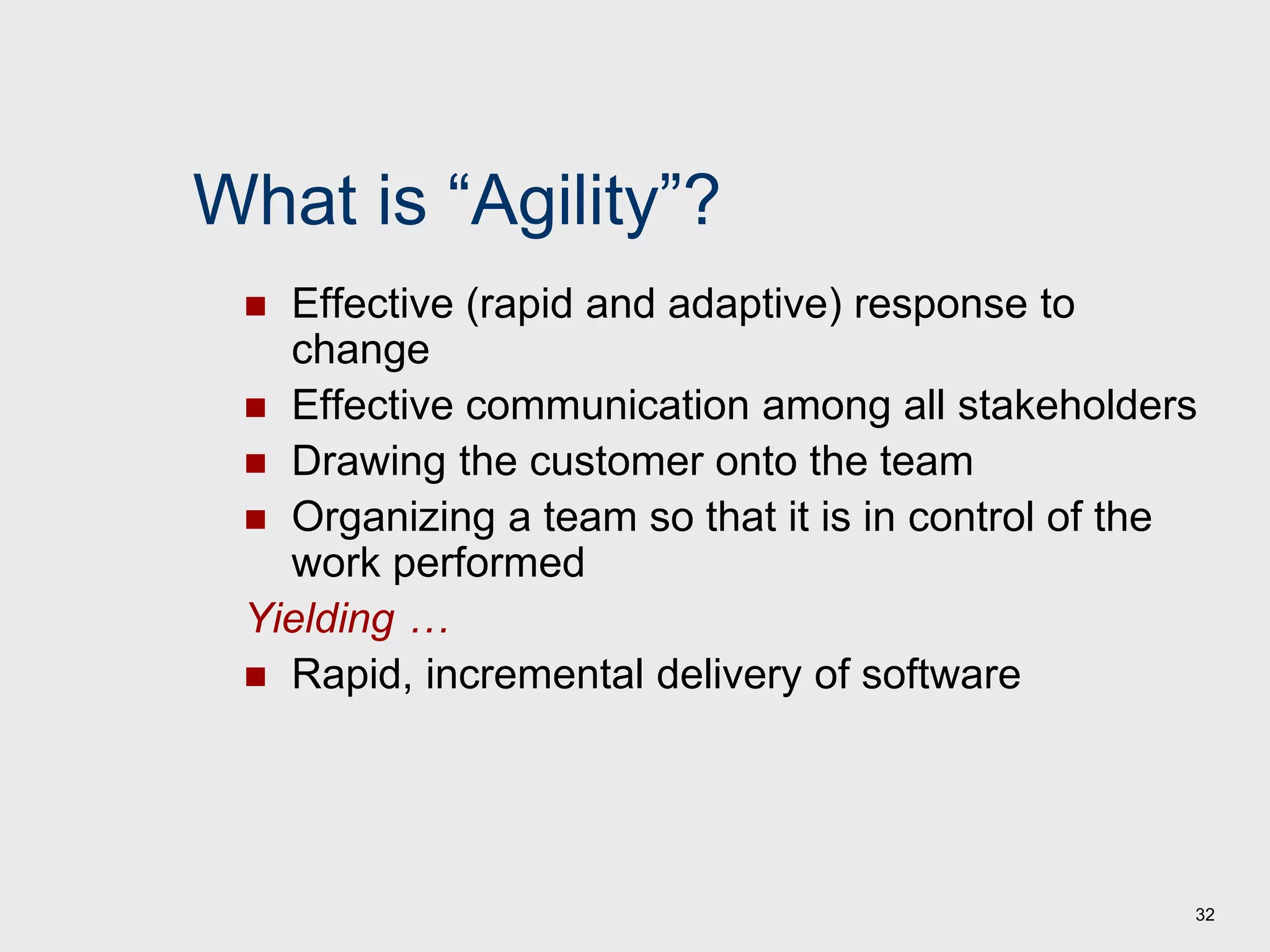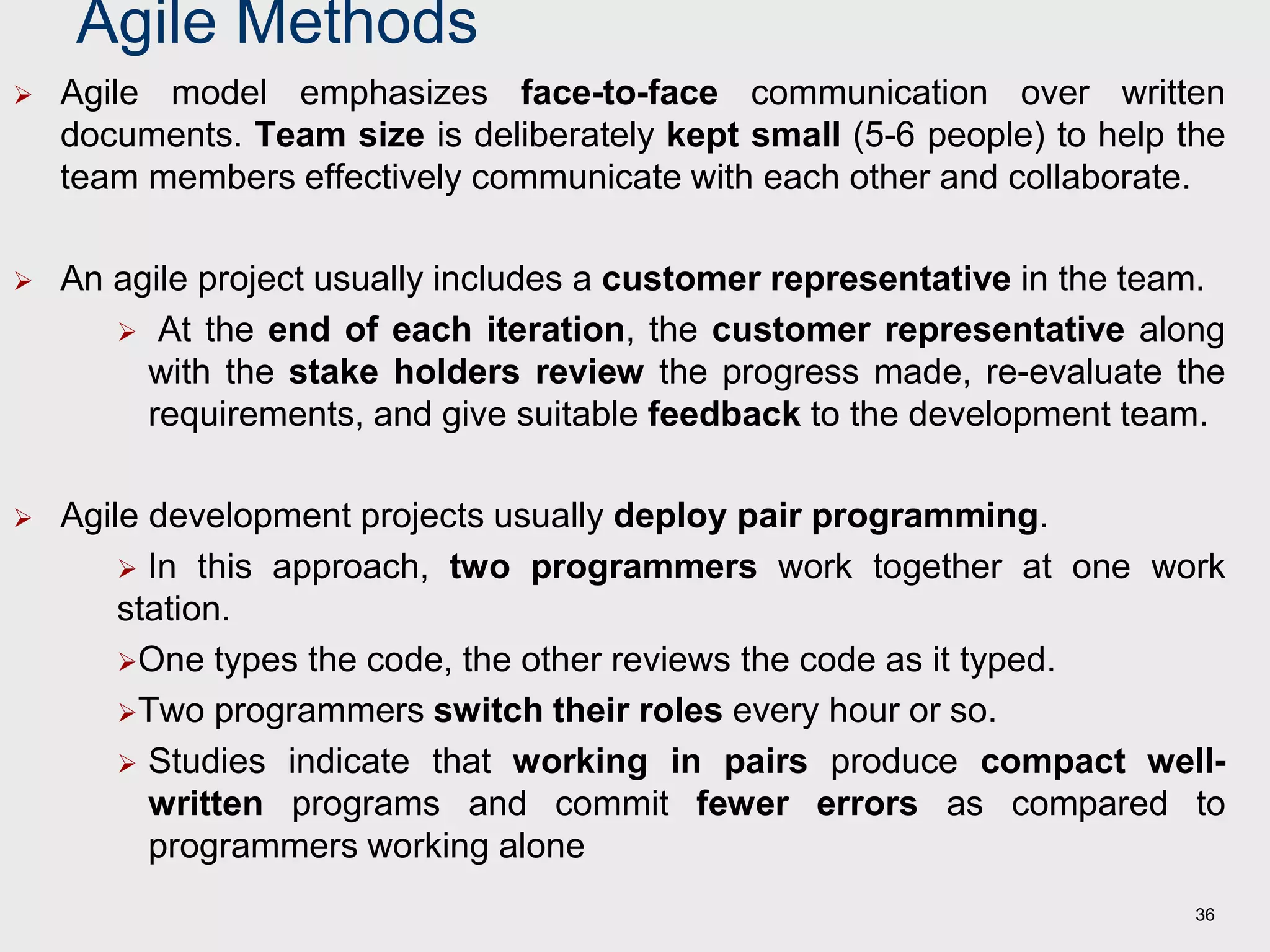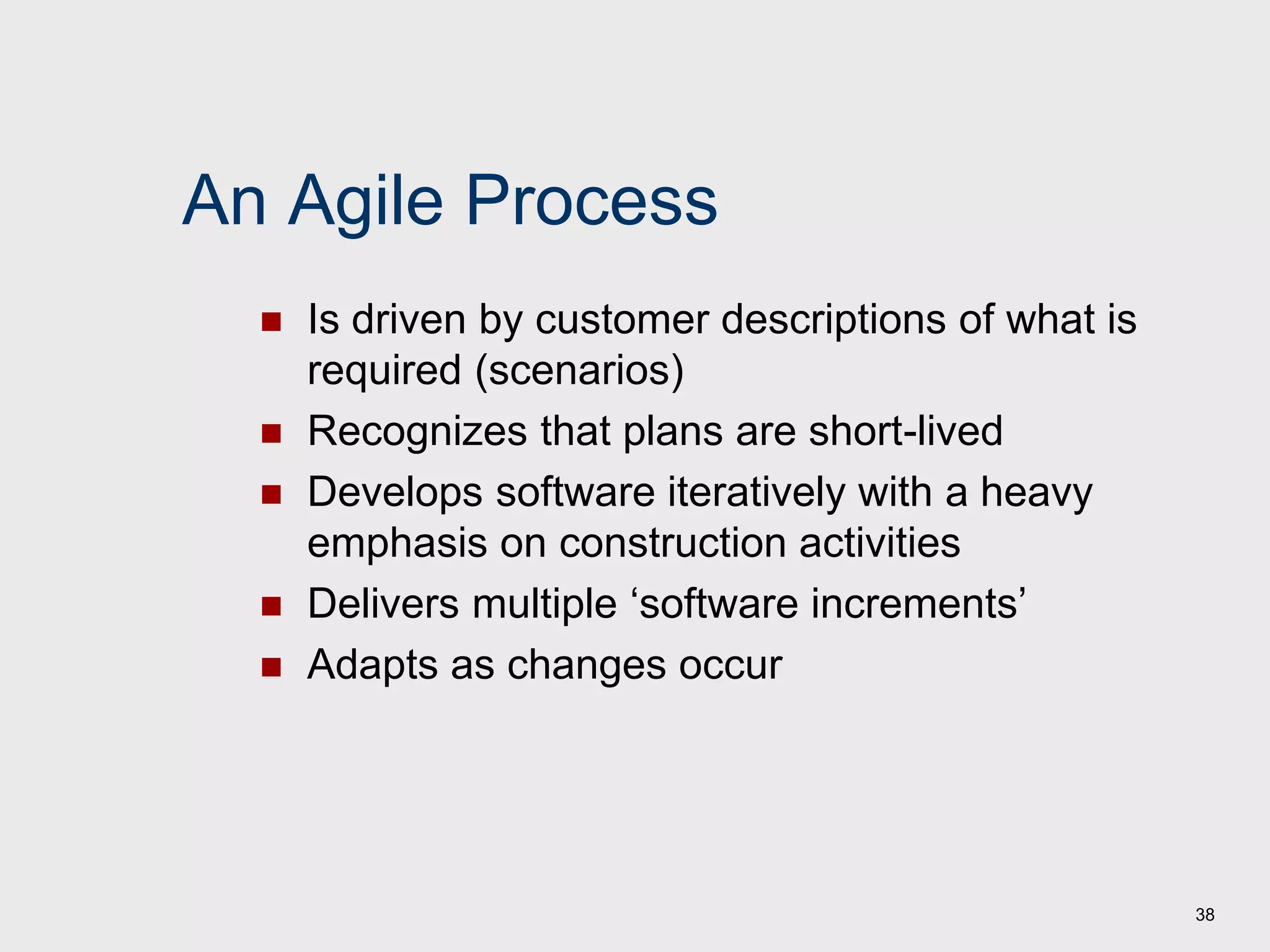The document discusses software engineering and agile development. It defines software and describes different types of software applications. It also discusses legacy software and the characteristics of web applications. The document then covers software engineering principles and different process models for software development, including prescriptive, evolutionary, and specialized models. Finally, it discusses agile development methods and principles, focusing on extreme programming as a prominent agile method.
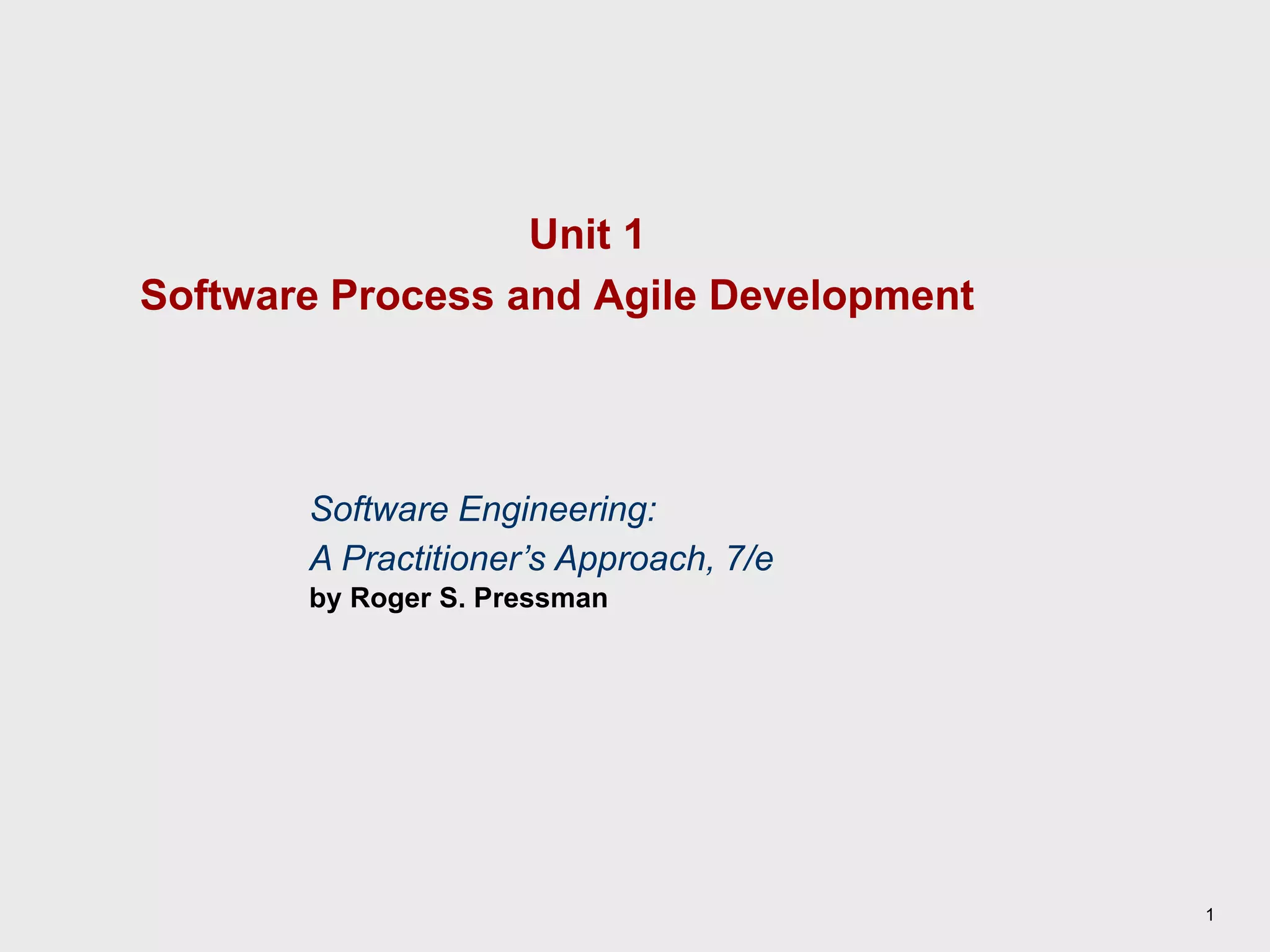

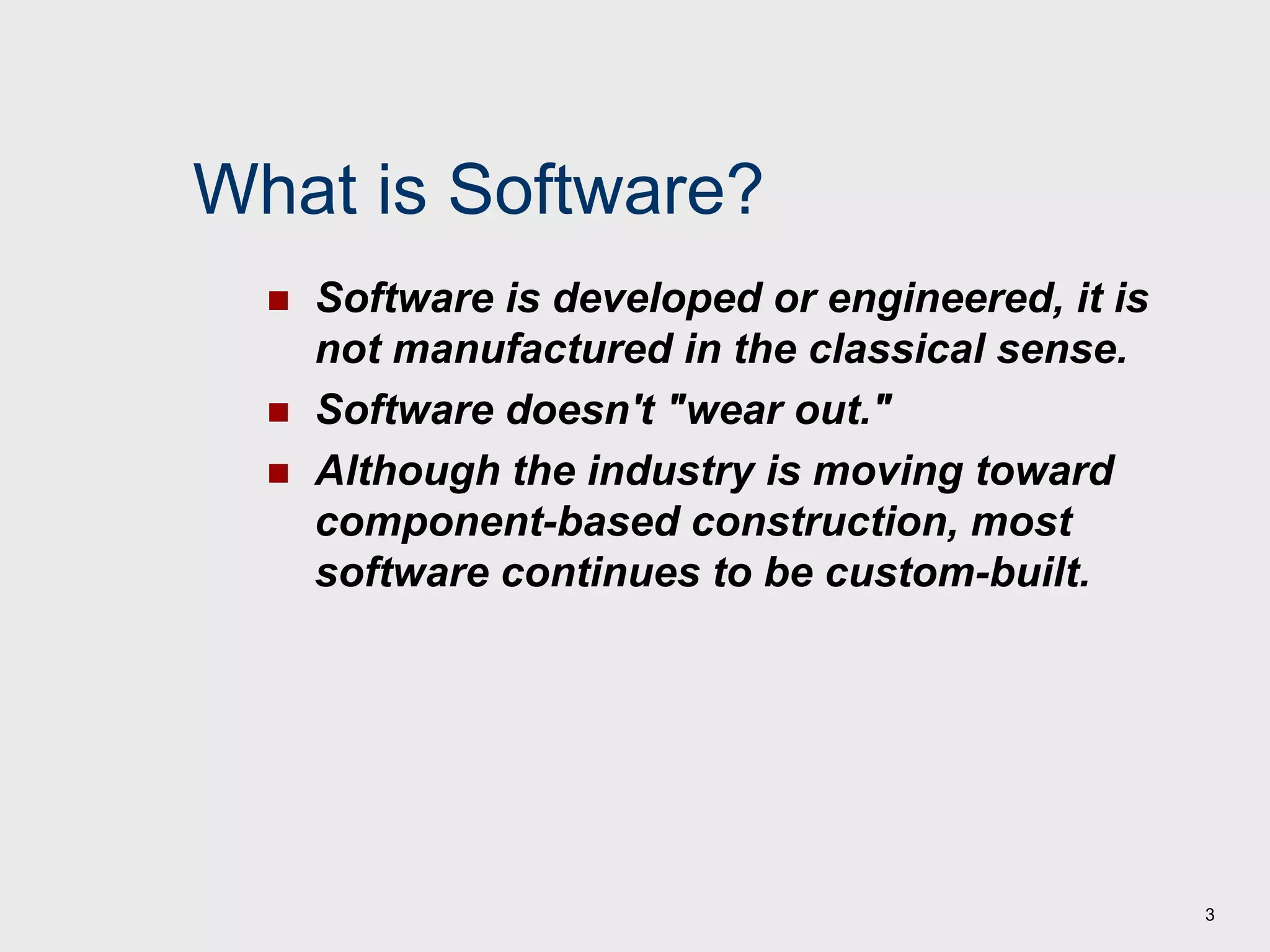

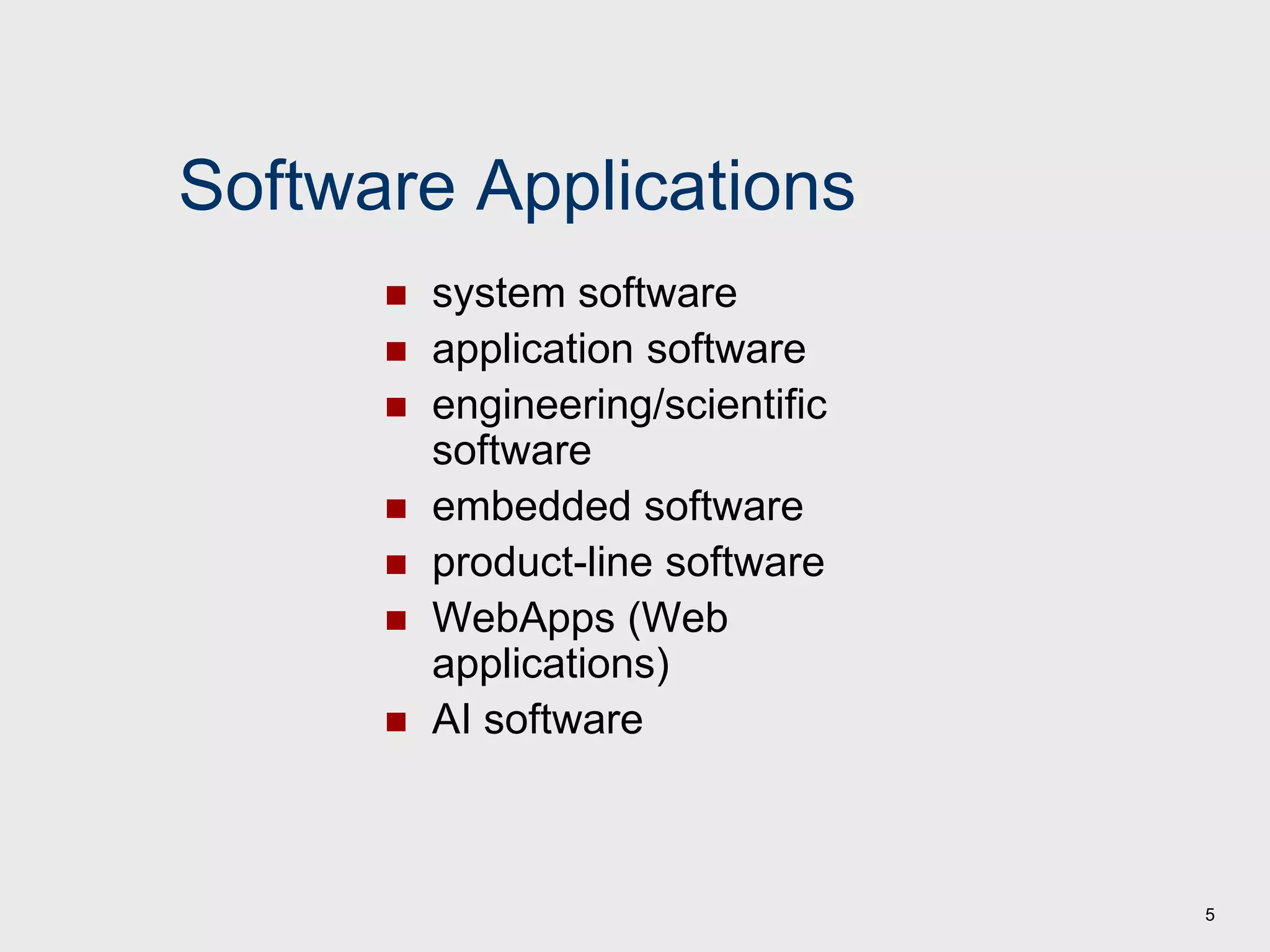



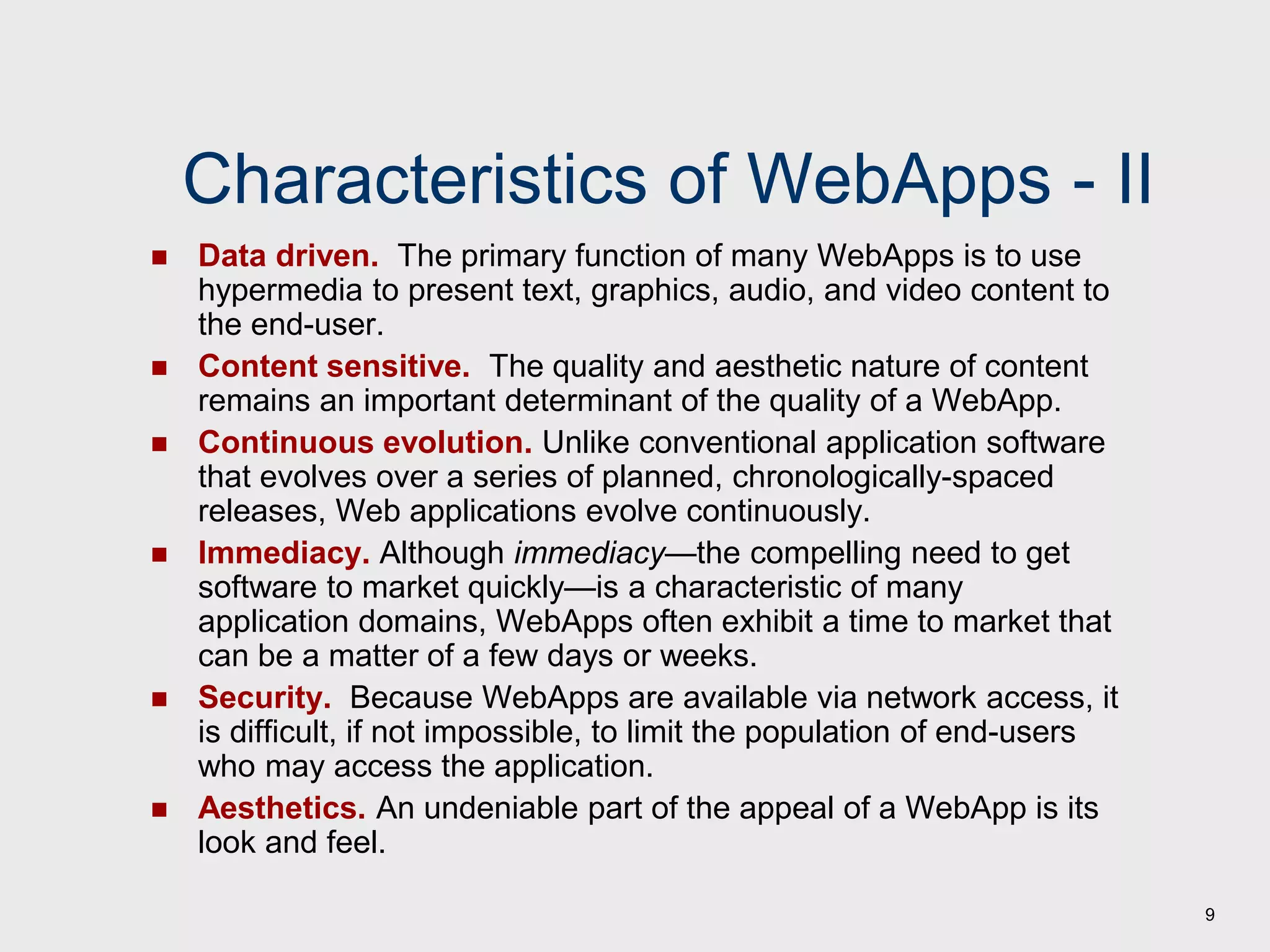
![10
Software Engineering
The IEEE definition:
Software Engineering: (1) The application of a
systematic, disciplined, quantifiable approach to
the development, operation, and maintenance of
software; that is, the application of engineering to
software. (2) The study of approaches as in (1).
The seminal definition:
[Software engineering is] the establishment and
use of sound engineering principles in order to
obtain economically software that is reliable and
works efficiently on real machines.](https://image.slidesharecdn.com/unit1-221102101700-915b5677/75/Unit-1-ppt-10-2048.jpg)






